三余水库除险加固设计(附CAD图纸)
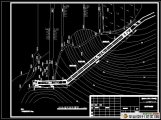
三余水库除险加固设计(附CAD图纸)(含选题审批表,任务书,开题报告,中期检查表,论文说明书22000字,CAD图纸20张合一)
摘 要:针对三余水库存在的大坝填土质量差、沉陷不均匀;输水隧洞砼老化严重、局部开裂;溢洪道底板未铺垫、侧墙多处破损;、无防汛公路、无通讯设施等问题,需要对水库除险加固。本设计主要包括对大坝的防渗设计、溢洪道和输水隧洞的加固设计以及防汛公路改造设计等。经设计后原工程有利于保护下游耕地,提高灌溉能力和防洪标准,及时准确掌握大坝的运行情况。
关键词:水库;防渗;加固;灌溉防洪
Design of Danger Elimination and Reinforcement Engineering for Sanyu Reservoir
Abstract: This paper presents many problems insanyu reservoir, such as the dam filling quality is poor, subsidence uneven, the tunnel concrete aging serious and local cracking, spillway floor without bedding and a number of destructive on the side wall and no flood roads, no communications facilities and other issues. The reservoir needs danger elimination and reinforcement. The design includes the design of the dam seepage, the spillway and water conveyance tunnel reinforcement design, and highway design, the control of flood and so on . After the original project designed, it can be to protect downstream land, improve irrigation and flood control standards, grasp in time and accurately of the operation of the dam.
[资料来源:www.doc163.com]
Key word: reservoir; seepage; reinforcement; irrigation and flood protection
[来源:http://www.doc163.com]
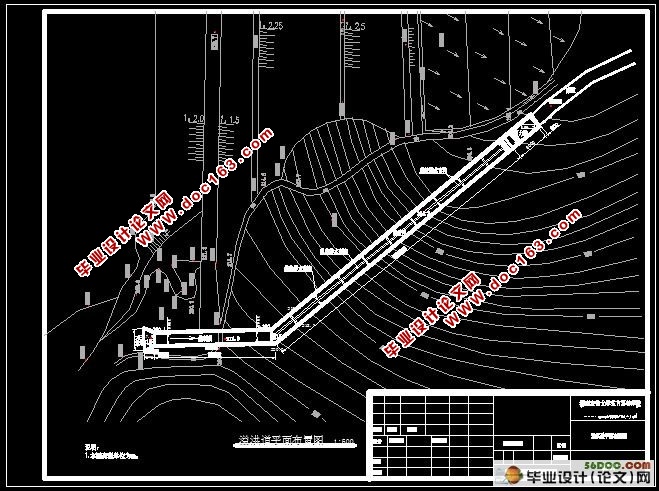
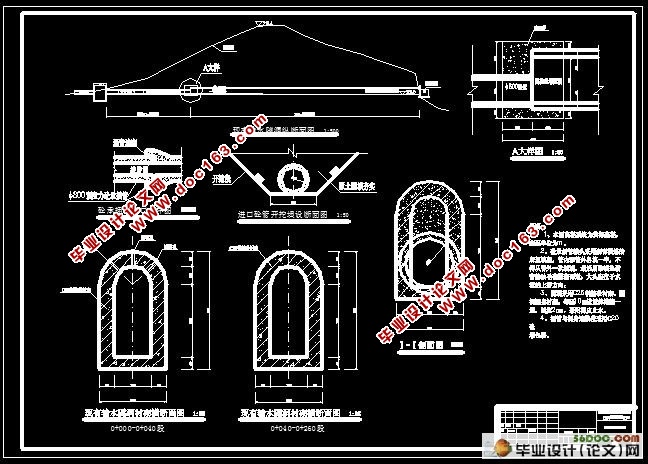
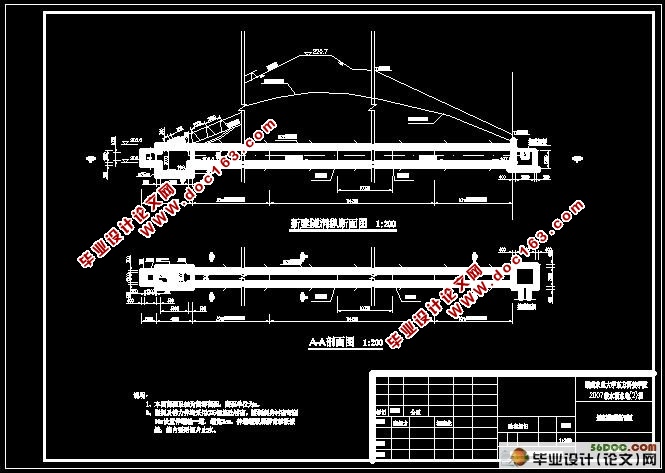
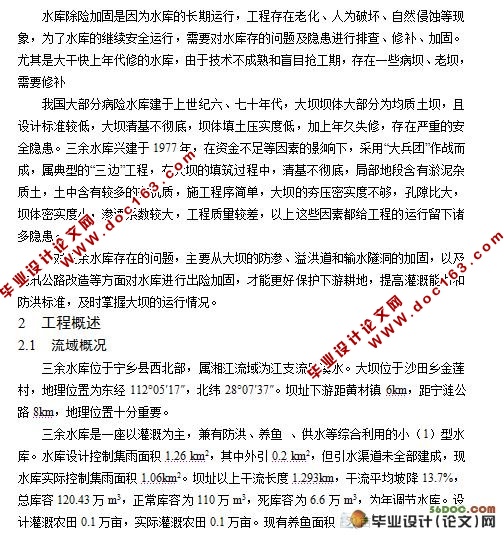
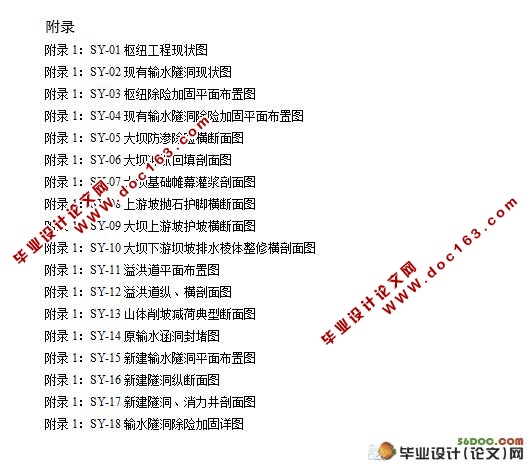
[版权所有:http://DOC163.com]
目 录
摘要 1
关键词 1
1前言 1
2工程概述 2
2.1流域概况 2
2.2气象 2
2.3工程地质 2
2.3.1工程区地质概况 2
2.3.2物理力学指标建议值 4
2.3.3天然建筑材料 5
2.3.4结论与建议 7
3水文计算 8
3.1设计暴雨 8
3.2设计洪水 8
3.2.1设计洪水成果计算 8
3.2.2设计洪水成果的合理性检查 11
3.3调洪演算 12
3.3.1基本资料 12
3.3.2调洪演算原则 13
3.3.3调洪演算的基本方法 14
3.3.4调洪演算结果 14
3.4水库抗洪能力设计 15
3.4.1水库大坝坝顶高程计算 15
3.4.2溢洪道控制段顶部高程设计 16
3.5防洪标准计算结果 17
3.5.1防洪标准 17
3.5.2水库大坝的实际防洪能力 17
3.5.3泄洪能力 17
4工程规划与总体设计 17
4.1工程规模及除险加固的必要性 17
4.2水库工程目前存在的主要险情 17
4.3除险加固技施设计 19
5除险加固设计 19
5.1设计依据 19
5.1.1工程等别及建筑物级别 19
5.1.2设计基本资料 19
5.2大坝除险加固设计 20
5.2.1大坝心墙高度不够及坝体散浸除险设计 20
5.2.2坝体心墙冲抓回填设计 21
5.2.3坝基、右岸坝肩与坝基接触面渗漏除险设计 22
5.2.4上游坡滑坡除险设计 25
5.2.5上游坡护坡除险设计 26
5.3溢洪道除险加固设计 27
5.3.1基本情况 27
5.3.2溢洪道水力计算 28
[资料来源:http://www.doc163.com]
5.3.3溢洪道除险设计 32
5.4输水低涵除险加固设计 35
5.4.1输水低涵封堵设计 35
5.4.2新建输水隧洞设计 36
5.4.3新建隧洞衬砌设计 38
5.5现有输水隧洞除险加固设计 39
5.6防汛公路设计 39
6结论 39
参考文献 39
致谢 40
附录 41
